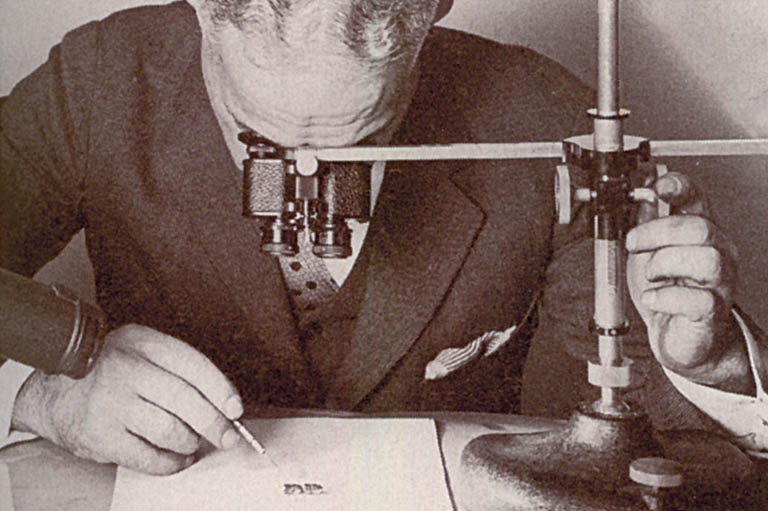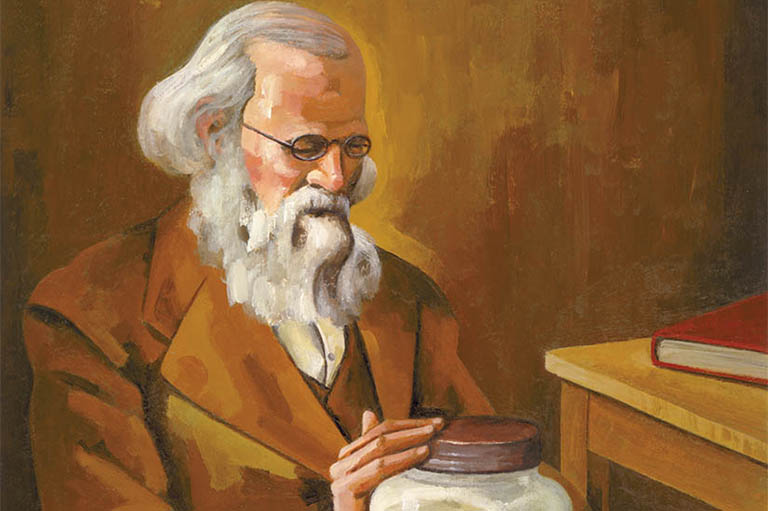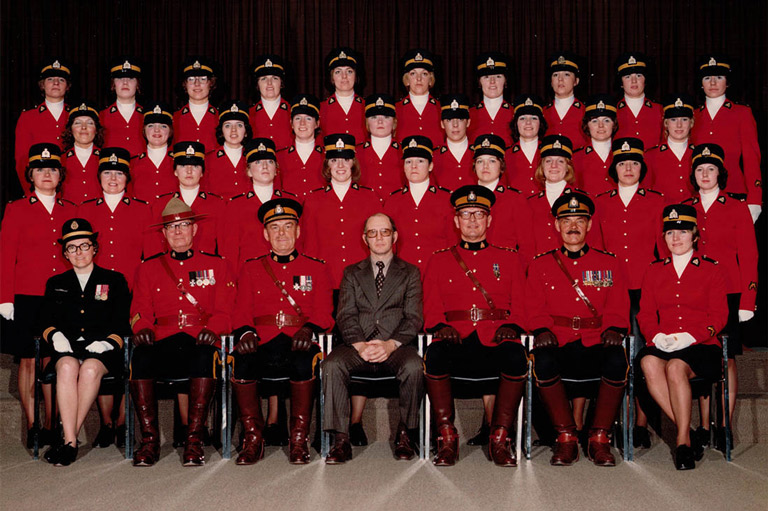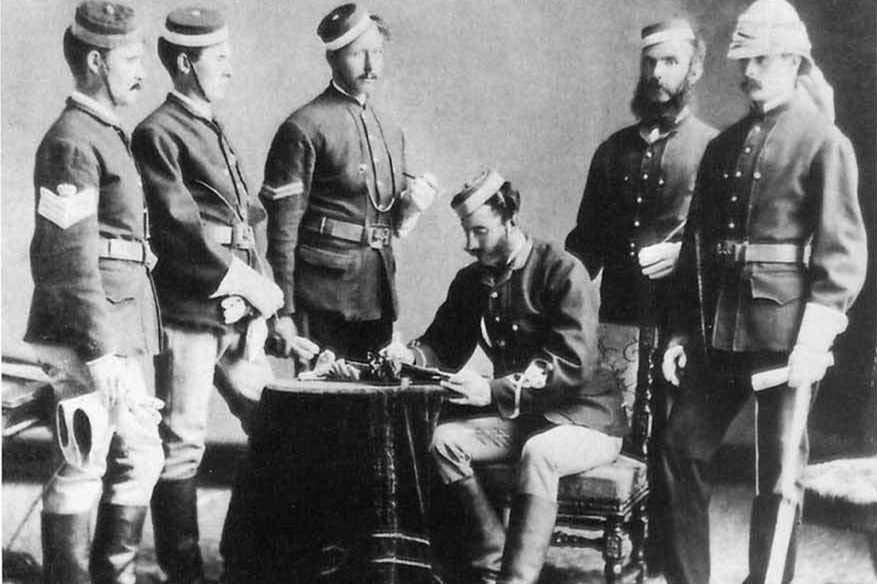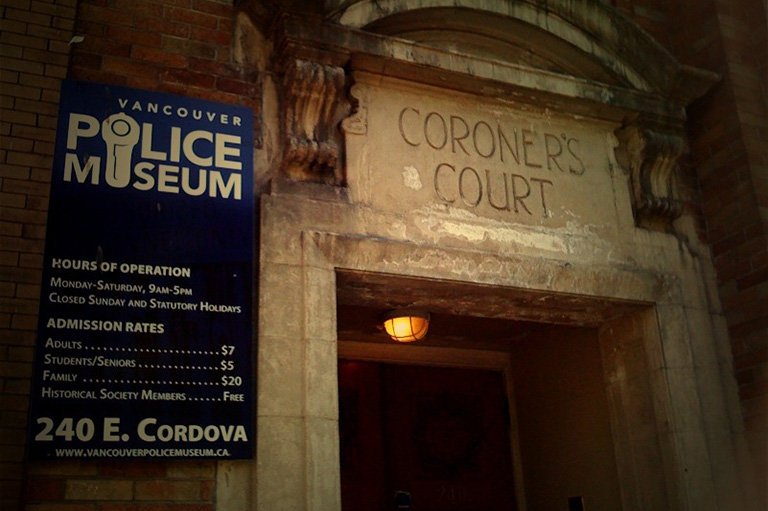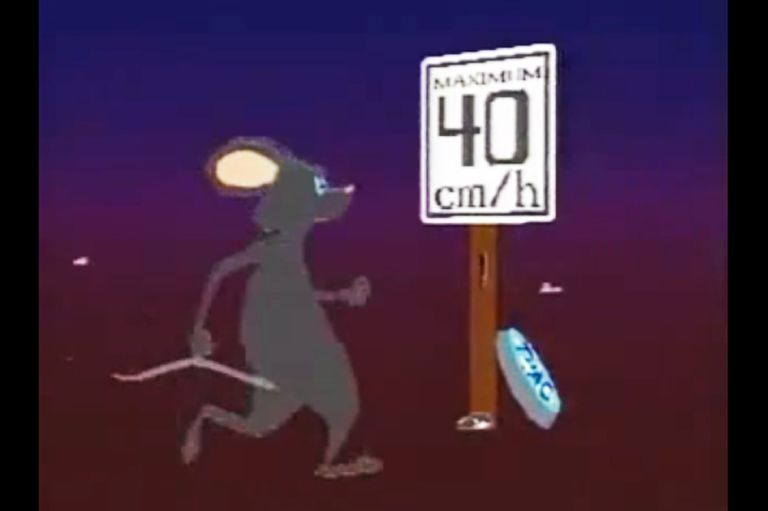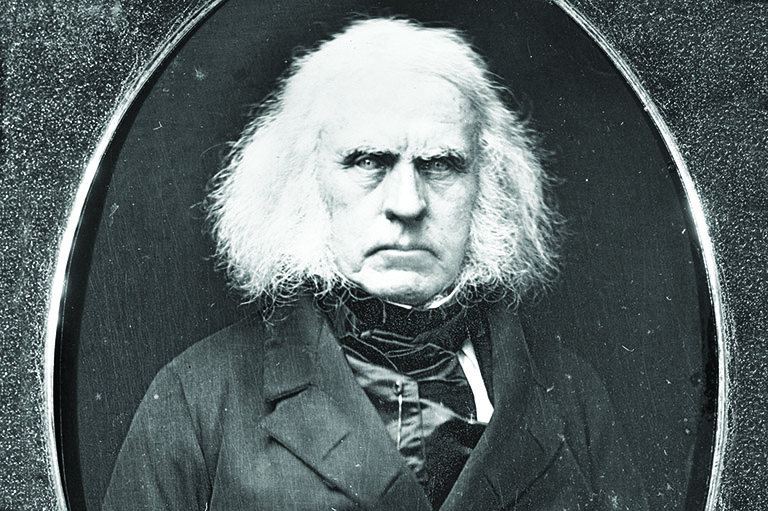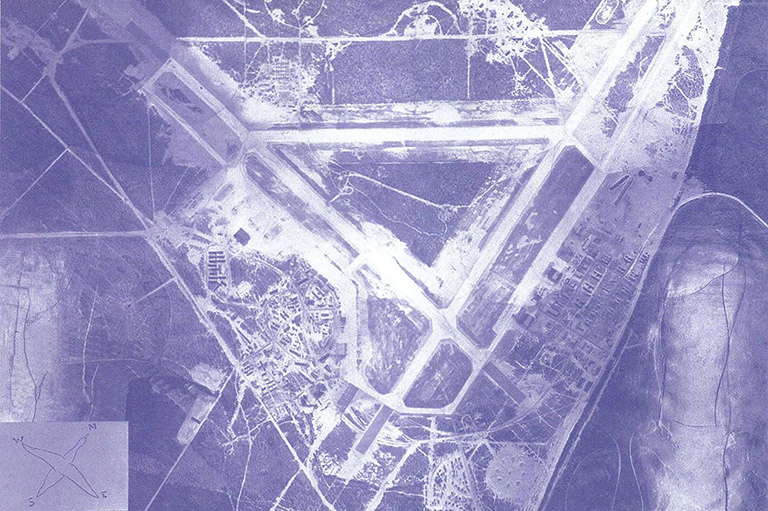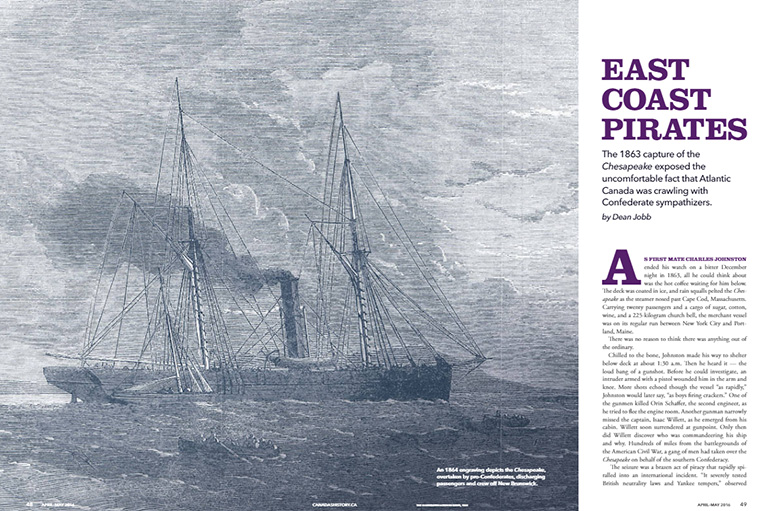Discover a wealth of interesting, entertaining and informative stories in each issue, delivered to you six times per year.
Inspector Cruickshank & The Case of the Beryl G
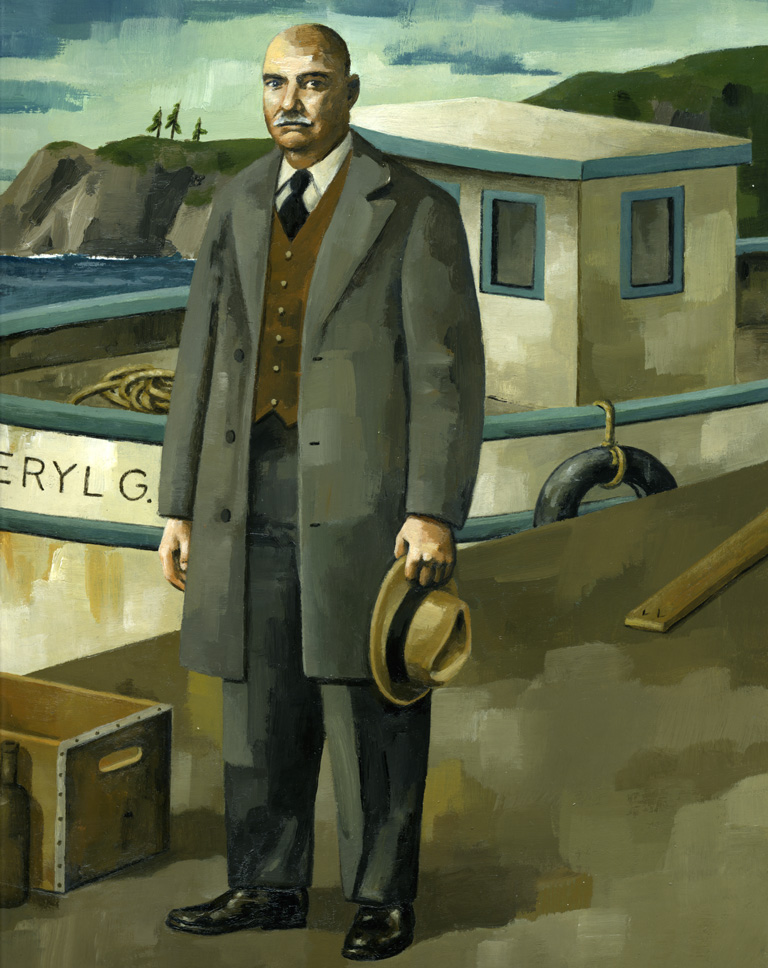
The pirates boarded the Beryl G near Sidney Island, twenty kilometres north of Victoria. They wanted the cargo she carried, and had the attitude and weapons to take it.
When the fractious captain resisted, they shot him and clubbed his teenaged son on the head, killing them both. Then they hooked the bodies to a line and towed them into deeper water near Halibut Island in Georgia Strait.
There, little more than a kilometre from where they died, Captain William Gillis and his son William were tied to the Beryl G's anchor and dropped into the ocean. It was September 16, 1924. The people of America had endured prohibition for more than four years.
Captain Gillis and his son were rumrunners. They were also legitimate businessmen — as long as the established export duty of twenty dollars a case was paid to the Canadian government. But the very nature of their business put them at risk. And now they were dead, victims of a crime inspired by greed and facilitated by the conflicting laws of friendly neighbouring countries.
They were also victims of geography. On the West Coast an invisible line sweeps around the bottom of Vancouver Island, drawing the international boundary at approximately forty-eight degrees north latitude. Proceeding easterly, the line splits Juan de Fuca Strait almost midway between Canada and the United States.
Clearing the tip of the island, it veers into Georgia Strait, tracing a jagged course north to the forty-ninth parallel, where it makes a beeline to the east. In this part of the ocean, the boundary is never more than a few kilometres from the shore of either country. And in the dead of night or in autumn fog, a boat is more likely to stray across the line than not.
With no crew to keep her safe, the Beryl G spent the night at the mercy of wind and tide. Chris Waters, lighthouse keeper of Turn Point Light on the American side, spotted the derelict vessel at dawn.
Seeing that she was in danger of being pounded to pieces on the rocky shore, he enlisted help from the local postmaster and they towed the boat to safety. Only then did they board her. And only then did they realize that something dreadful had happened on the Beryl G.
Below deck was smeared with blood, and the disorder there was much more than the result of bad housekeeping.
The American Coast Guard towed her to Friday Harbor on nearby San Juan Island and considered the alternatives. Their knowledge of the winds and currents of the last twenty-four hours suggested that the boat had drifted over from the Canadian side. And the Beryl G was a Canadian vessel, so the crew must have been Canadian as well. Clearly, this was a job for the Canadian police.
Inspector Forbes Cruickshank was a tough cop. In his mid fifties, he still had the size and rough manner that could intimidate those on the wrong side of the law. Cruickshank had begun his police career in Scotland, and found the work suited him well. But the New World called, and he soon emigrated to Canada, where he enlisted with the North-West Mounted Police.
After years of exemplary service with the famous force, he moved again, this time to the BC Provincial Police. By the time Beryl G was found adrift, he was the inspector in charge of the Vancouver detachment of the provincial police’s criminal investigation division.
As it happened, Cruickshank needed to get away from Vancouver for a time. The city was in an uproar over the Janet Smith case, involving a nursemaid in high-toned Shaughnessy Heights who had apparently died from a gunshot wound to the head.
Local Point Grey police had badly bungled the investigation, and when the coroner announced a finding of accidental death, public attention was galvanized overnight. Speculation knew no bounds: two high-society men had killed the pretty young woman in a fight for her attention, or she’d died of a drug overdose, or she’d been raped and murdered. That it was the Chinese houseboy who had found and reported the body, further muddied the waters in the racist climate of that day.
Responding to the pressure, Alexander Malcolm Manson, attorney general in B.C.’s Liberal government, ordered the provincial police to reopen the case. Because the evidence that once existed was compromised, Cruickshank, with Manson’s tacit approval, hired a private detective to kidnap the houseboy and attempt to extract a confession. But this failed, and the press got wind of it.
A second inquest determined that a person or persons unknown had willfully murdered Smith. Sensing a cover-up, the press and the public demanded satisfaction. The resulting scandal wrecked several careers, including that of Manson, who was refused a cabinet post when the Liberals returned to power in 1933. But good fortune was on Cruikshank’s side.
Thanks to the tragedy of the Beryl G, he was removed to a safe distance, well away from the spectre of humiliation and disgrace.
The file on Forbes Cruickshank’s desk included a report from the initial inspection of the Beryl G. It spoke of large amounts of blood in the cabin - bloody marks suggesting that bodies had been dragged up the companionway - and a missing anchor. There were bullet holes and empty cartridges, but no guns.
The only other clues were a camera containing a film with one exposed frame and a bloodstained seaman’s cap. Police had processed the film and included the photo in the file. Taken from the deck of the Beryl G, the photo showed the stern of a boat bearing the American registration number M 493. The inspector’s first task was to locate M 493. But with no official status in the United States, he had to work undercover.
Cruickshank crossed into the United States on a grey and misty morning in late September, an anonymous middle-aged man with a brush moustache and a military bearing. After many days of walking the Seattle docks, he found nothing and learned nothing. Then he remembered the locks connecting Lake Union with Puget Sound.
The lockkeeper agreed to let him search the records, and there it was: M 493 was a fast eighteen-metre boat, belonging to one Peter Marinoff, a.k.a Legitimate Pete. Marinoff was one of the biggest rumrunners in Tacoma, Washington, and he was willing to talk. Liquor pirates had interfered with his business long enough.
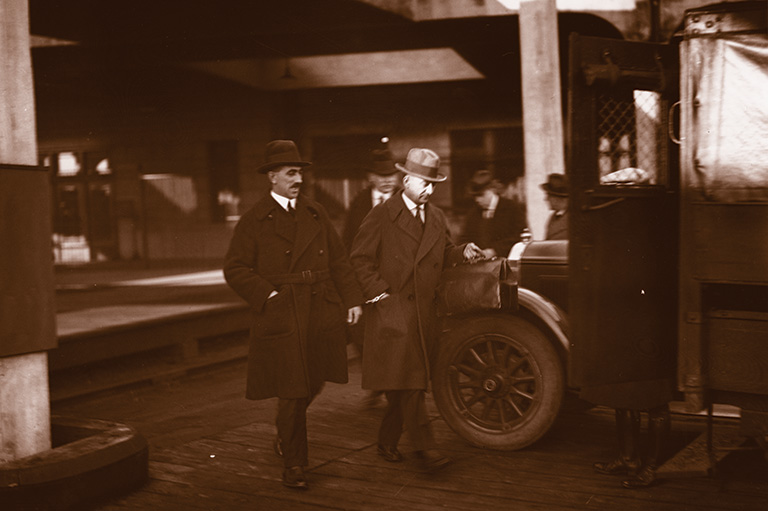
Marinoff confirmed that Gillis had gone to Rum Row on the west coast of Vancouver Island. There, in international waters, after dark on September 15, Gillis had met the supply ship Comet and transferred 350 cases of liquor to the Beryl G. Soon after that, one of Marinoff’s men met Gillis in a cove on the east side of Sidney Island, taking 110 cases aboard M 493.
When he returned for a second load the next day, Gillis was gone. That was all Marinoff’s man knew, until the Beryl G was found adrift near Turn Point Light. Marinoff finished with a suggestion: the inspector might benefit from talking to a man called Al Clausen.
Clausen operated a service station in Seattle, but he had a more lucrative and interesting sideline. He owned a fast boat that was available for charter with no questions asked. Reluctant to talk at first, he soon responded to the inspector’s questioning. Clausen recalled taking three customers into Canada on two occasions in late September. Their names were Charlie Morris, Harry (Si) Sowash, and Owen (Cannonball) Baker.
On one trip, they stopped at several places in the Gulf Islands, picking up cached liquor at each location. On Pender Island, a farmer named Thorston Paulson gave them some old sacks and a bit of green paint, so they repackaged all the bottles in the sacks, marked each one with a green letter C (for Clausen), and submerged them in shallow water for later pickup. On the second trip, Baker confessed to Clausen that he’d taken the liquor from Gillis and his son.
So far Cruickshank had associated the Beryl G with rum-running, found the owner of the boat in the photo, and had the names of three suspects. But there was still the bloody cap. It took a lot of walking and a lot more patience, but he finally found the right store in Seattle.
The clerk recalled that the customer had bragged about running booze out of Canada, and said he needed the cap as a kind of disguise.
When Cruickshank showed him photographs of the suspected men, the clerk immediately recognized Owen Baker. As it happened, Baker was easily found; he was in jail, awaiting trial for bootlegging liquor to a doctor in Anacortes, a Washington seaside town. Even better, the liquor had been delivered in an old sack marked with a green letter C.
Meanwhile, back in Canada, Provincial Police sergeant Bob Owens heard some gossip about a boat called the Denman II. Owned by Paul Stromkins, the vessel had recently undergone extensive work on its superstructure. The work hadn't been necessary. All it accomplished was to change the way the boat looked.
Before he could follow up on this lead, Owens visited Thorston Paulson on Pender Island. Willing to talk, Paulson identified Clausen, Sowash, and Baker from photos the sergeant showed him. They were the men he’d supplied with the sacks and paint. He didn’t know their names, but he did know the person in a fourth photo. It was Paul Stromkins, his old friend from Manitoba.
Sign up for any of our newsletters and be eligible to win one of many book prizes available.
Stromkins denied either knowing Paulson or having any connection with the Beryl G hijacking. But when the police arranged an “accidental” meeting between the two men in the Victoria police station, Stromkins, unnerved by the encounter, couldn’t hide that he knew Paulson. Unable to stop talking, he made a statement that downplayed his involvement, while fully implicating Morris, Sowash, and Baker.
Charlie Morris was picked up in Seattle, and his extradition hearing was set for early in 1925. The other two had disappeared, and a reward of $2,000 for information leading to capture was posted. Owen Baker turned up in New York City, where he was working on a dredger as George Nolan.
The New Orleans police collared Harry Sowash in a routine early morning sweep of the city streets. He was somehow able to convince them that he was a respectable citizen out for an early walk, and they let him go. But another officer, who saw Sowash leave, recognized him from the wanted poster, and the search was on.
They picked him up later that same morning, trying to hitch a ride on a ship outbound for South America.
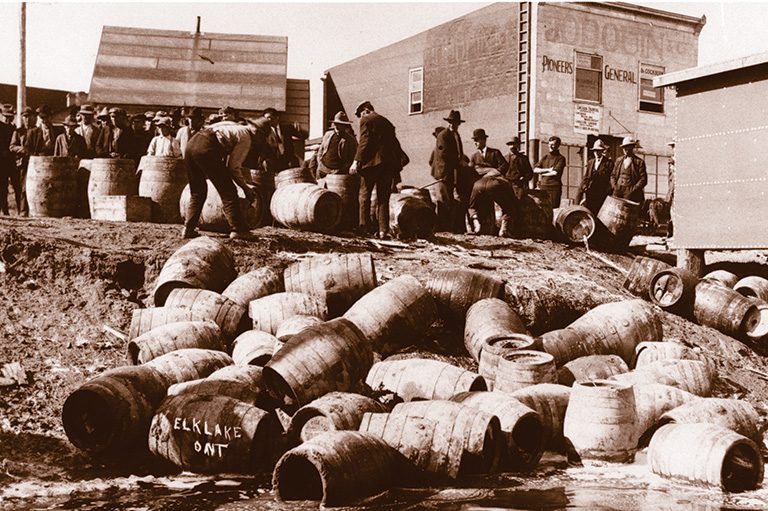
Morris was still in Seattle resisting extradition when Stromkins, Baker, and Sowash came to trial in June 1925. Stromkins, who had agreed to testify for the Crown, was freed, although he quietly indicated that he would prefer to remain in custody. (A wise choice, as he probably wouldn’t have survived for long on the streets.)
In court, he testified that Baker, Sowash, and Morris had boarded the Beryl G, where she waited at Sidney Island on the night of the murders. Morris wore the fancy seaman’s cap and a brass-buttoned jacket, pretending to be a revenue agent. When Gillis resisted, Baker shot and killed him. One of them (though it was never determined who) shot the boy, but he was only wounded so they clubbed him to death at the top of the companionway.
Then they dragged the bodies to the deck, handcuffed them together, and tied them to the anchor with rope. Most of their clothing was removed, and they were slit open to help them sink.
The trial lasted a week, but the jury needed only a few minutes to find Baker and Sowash guilty. Morris lost his fight against extradition and arrived in Canada on the same day his friends’ death sentences were pronounced. His defense consisted solely of a claim that he’d been drinking all day before the hijacking and fell asleep as the Denman II left Victoria.
Since he never woke up again until they were coming into Anacortes, he had no knowledge of the murders. The jury found Morris guilty anyway, and recommended mercy. The judge, who wasn’t inclined to be merciful, responded with a sentence of death by hanging.
On January 14, 1926, the gallows were ready at Vancouver’s Okalla Prison. As the prisoners were brought in, Owen Baker noticed Inspector Cruickshank standing among the witnesses. “Hello there, Cruickshank,” he said. “Goodbye, old boy.” Harry Sowash also spoke. “Goodbye there,” he said. “Goodbye, boys,” Cruickshank answered.
Baker’s final words, now muffled by the black hood over his head, were addressed to Arthur Ellis, the public hangman in B.C. for many years. “Step on her, kid. Make it quick.”
Inspector Cruickshank had brought the criminals to justice, or at least most of them. After the trail, Morris’s sentence was commuted to life in prison. Paul Stromkins, the only other living person who knew the whole truth about that terrible night, was free in exchange for his testimony. Still, the outcome was more than satisfactory for Cruickshank.
It was a badly needed triumph after his dismal failure on the Janet Smith case, which remains unsolved to this day.
The mortal remains of Captain Gillis and his son were never found. Anything left of their bones must still be shackled to the anchor of the Beryl G, where it lies on the seabed near little Halibut Island. As for the Beryl G herself, she was sold and renamed the Manzetta.
Early in 1929, she ran aground on a reef in Porlier Pass near Valdez Island in Georgia Strait. Nothing remained that was worth salvaging, and her life was done.
Et Cetera
Pass the Bottle: Rum Tales of the West Coast by Eric Newsome. Orca Book Publishers, Victoria, B.C., 1995.
The Case of the Beryl G by Eric Newsome. Orca Book Publishers, Victoria, B.C., 1989.
Themes associated with this article
You might also like...

Canada’s History Archive, featuring The Beaver, is now available for your browsing and searching pleasure!

Beautiful woven all-silk bow tie — burgundy with small silver beaver images throughout. This bow tie was inspired by Pierre Berton, inaugural winner of the Governor General's History Award for Popular Media: The Pierre Berton Award, presented by Canada's History Society. Self-tie with adjustments for neck size. Please note: these are not pre-tied.
Made exclusively for Canada's History.
Save as much as 52% off the cover price! 6 issues per year as low as $29.95. Available in print and digital.


